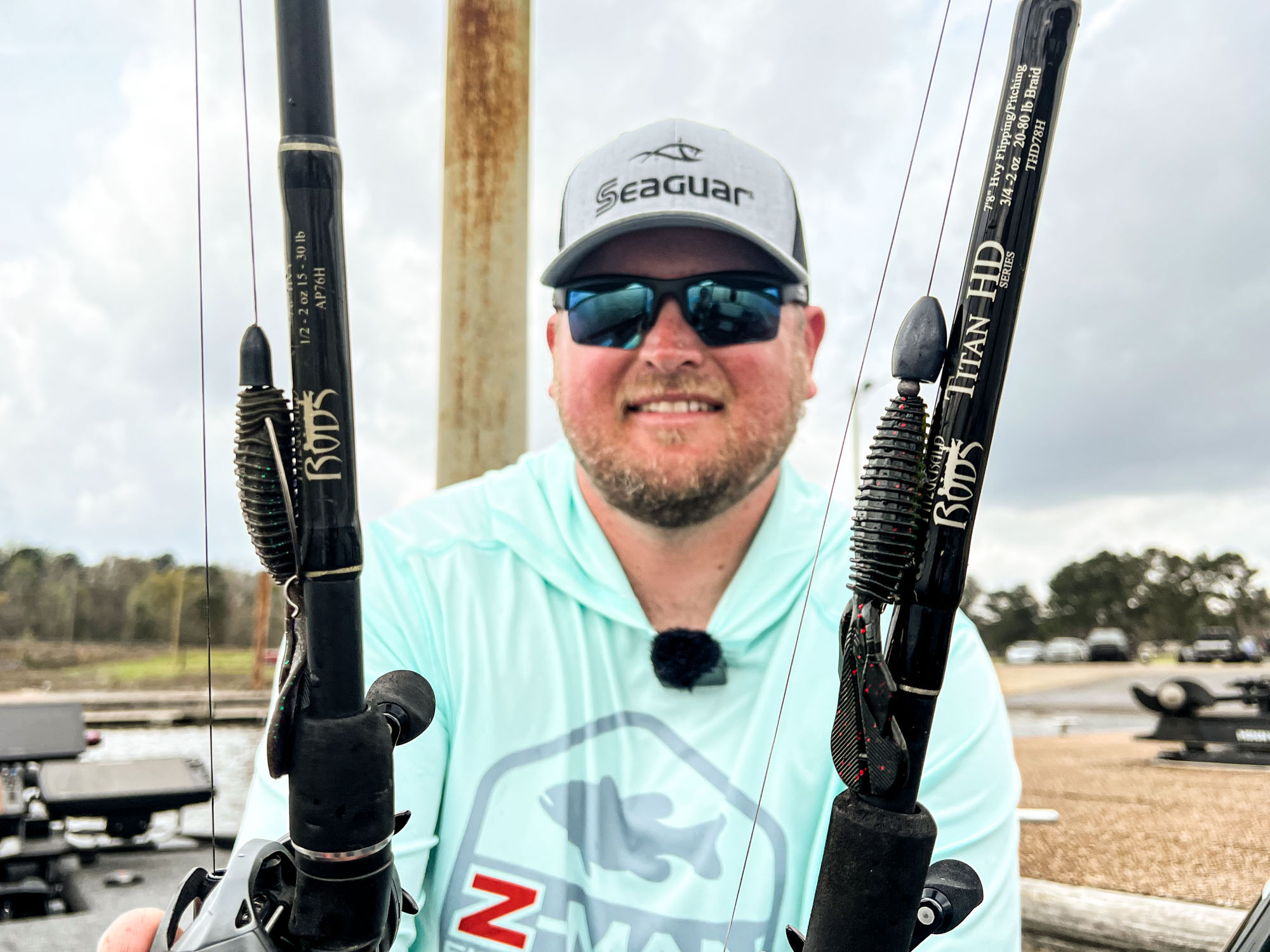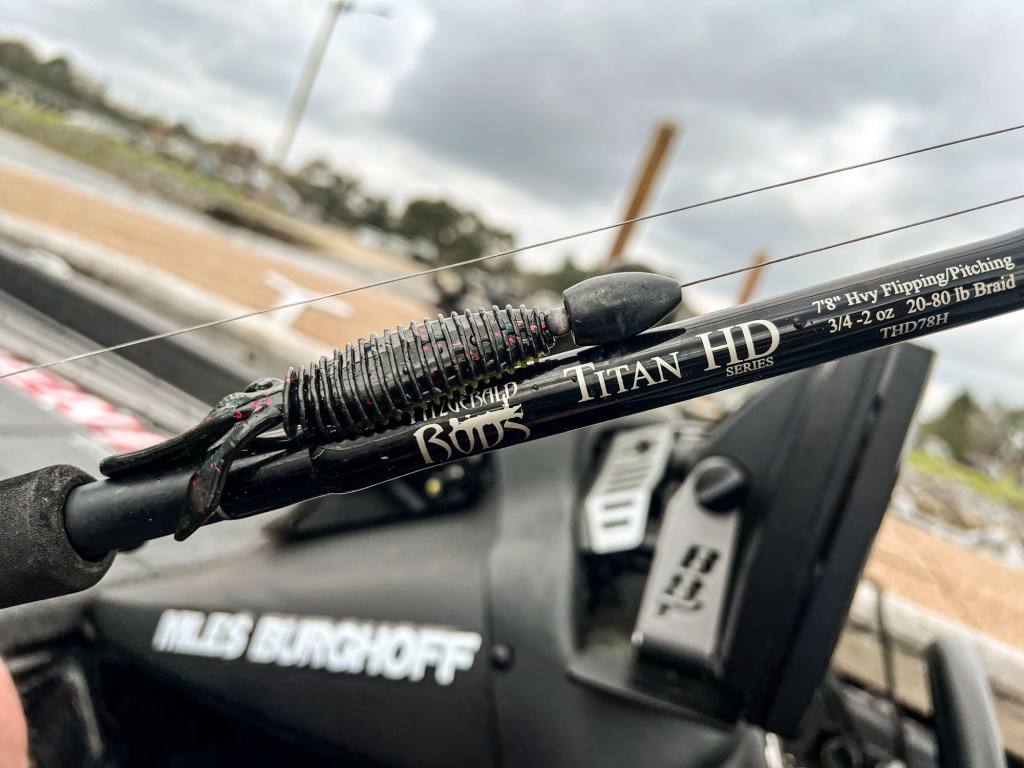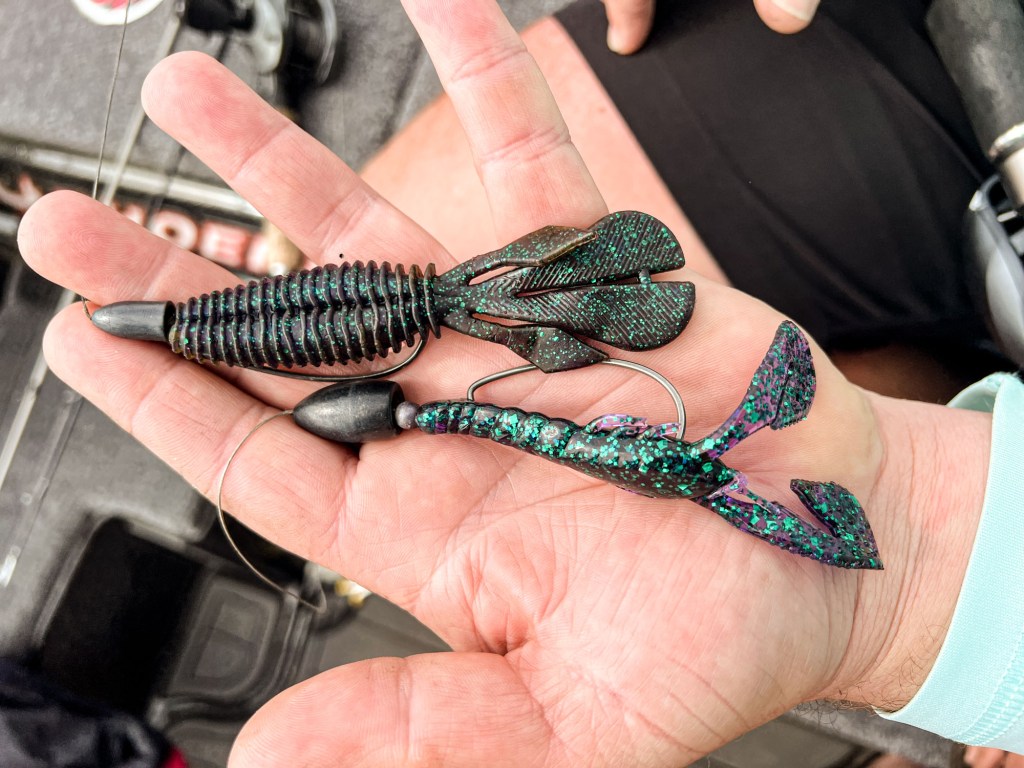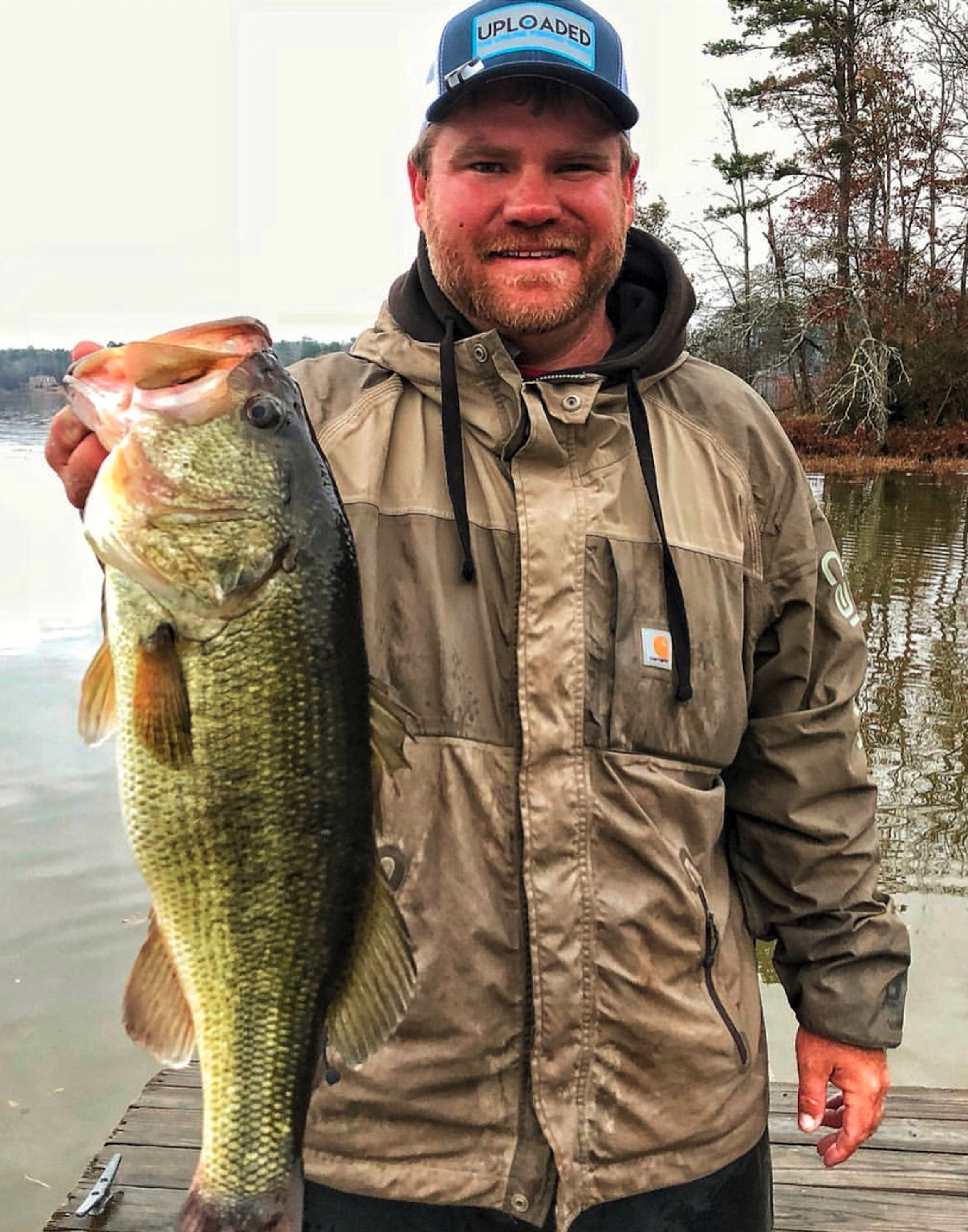
Miles Burghoff was born and raised on shallow-water fishing. Though this Bassmaster Opens EQ angler has spent the last 19 summers guiding in southeast Alaska for trout, halibut and other species, he’s spent even more time power fishing the shallows of bass fisheries across the Lower 48. We sat down with Burghoff to discuss his favorite style of fishing for bass, which is really three techniques in one.
“My favorite technique is pitching for sure,” said Burghoff. “But a lot of people consider flipping, pitching and punching the same technique. Really, they couldn’t be more different as far as the density of the cover you’re fishing and even the type of cover.”
Pitching is the most versatile of these three techniques. Using a jig or a Texas-rigged soft plastic with a fairly light weight, an angler can pick apart cover that is close to the boat via short, underhanded pitches.
Flipping is more of an old-school technique that is rarely used anymore. While flipping, the angler never disengages the reel and only uses a short stretch of line to dob a bait around very close to the boat.
And then punching is basically pitching or flipping, but while using a big weight to break through dense, overhead cover. Noting how the fish are relating to and using cover in different seasons, Burghoff is able to narrow down the best shallow-water approach of these three.
Through different seasons
“In the spring, when the fish are spawning, I’m going to be primarily flipping and pitching — pitching lighter weights, like a 3/8-ounce weight with some type of creature bait. I’m going to be pitching to little pockets and little areas where I think the fish are going to be spawning.”
Bass need sunlight on their beds to incubate their eggs, making them more susceptible to the lighter-weight approaches of flipping and pitching. But as the spring fades into summer, these bass seek shelter to recover.
“That’s when you’re going to want to go in heavy cover with the heaviest tackle that we know as bass fishermen. You’re going to be using real heavy weights like an 1 1/2-ounce tungsten. And you’re going to be pitching into the densest cover available.”
Where Burghoff targeted the open holes and pockets in the spring, he’s now looking for the points and irregularities where the bass have burrowed deep into the cover. As the summer transitions to the fall, his focus shifts again.
“I like to punch if there is matted hydrilla or milfoil on the lake I am fishing. In the fall the root systems of these matted grasses are starting to die off, leaving tunnels for bass to navigate, so I will pitch way further back into the mats than any other time of year. Wood also becomes a big deal this time of year, with laydowns and isolated wood leading into the backs of creeks being key targets.”
The winter is the least productive time of year to flip and pitch throughout most of the lake according to Burghoff, though he will still look to do it in dingier (not muddy) water. This dirtier water keeps the bass shallow and relating to isolated cover where they are susceptible to these close-quarter tactics.

Line selection
Burghoff keeps his tackle selection pretty simple when it comes to flipping, pitching and punching. Anytime he’s fishing around vegetation, it’s straight braid and usually 65-pound test for all three techniques.
“Sixty-five pound braid is kind of standard for fishing around vegetation. I use 65-pound Smackdown from Seaguar. That goes for my light pitching the edges of the grass, or going in to the heavy stuff with the big punching rod.”
“If you’re pitching around hard cover, such as dock posts or wood, fluorocarbon works great. In fact it’s the best type of line to use around hard type cover because it doesn’t dig into wood.”
Twenty-two-pound test Seaguar Tatsu is Burghoff’s go-to fluoro for pitching and flipping, moving up or down a little based on the cover and water clarity.
Rod selection
When it comes to rod selection, Burghoff keeps it simple here too. He’ll have one of two rods in his hands: a 7-8 heavy action rod for punching or a 7-6 heavy for flipping and pitching.
“The punching rod that I have is a 7-8 heavy Titan HD Series Flipping and Pitching Rod from Fitzgerald Fishing. That one I go into the heaviest cover with. But for the flipping and pitching though, I’m going to be using a 7-6 heavy, the Fitzgerald All Purpose Rod. That is my favorite overall light-to-moderate flipping stick.”

Reel selection
When the conversation shifted to reel selection, Burghoff pointed out something that most anglers probably never think about.
“One thing I realized early on is that we’re very inefficient when it comes to the reels that we use. We tend to use left-handed crank spinning reels but right-handed crank casting reels.”
As a right-handed angler, this perplexed the young Burghoff. Why would he use a rod and reel combo that he had to change hands between each cast and retrieve?
“I was like, man why I do keep switching hands during the cast. So I ended up teaching myself to use a left-handed reel even though I’m a right-handed angler.”
By doing this, Burghoff eliminated the second it takes to swap the rod from his right hand to his left. A second seems inconsequential. But hundreds of pitches and flips a day add up to a lot of seconds. And just one of those seconds when flipping, pitching and punching could be the difference in a great day and the near-miss of a giant bass.
“The ability to flip and pitch without ever having to switch hands is a big deal. A lot of times, those bites are going to come immediately on the fall and you might even miss it just switching hands. So I really like using left-handed reels and nowadays it’s just second nature.”
Burghoff’s reel of choice is a 7.2:1 gear ratio Fitzgerald Fishing VLD10 casting reel. And his go-to bait is the Z-man Palmetto BugZ.
“I also love flipping the new Z-man Gremlin and the Hella CrawZ when the bass want something with more action. The Hayabusa WRM959 is by far my favorite flipping hook.”
In conclusion
Whether you go to the extreme of learning to fish with left-handed reels as a right-handed angler, or choose to simply focus on when to employ one of these three techniques around different type of cover, the more you perfect your presentation, the more efficient of an angler you’ll be. And when talking close-quarters fishing, efficiency is paramount.
The bites are often big when flipping, pitching and punching, but they can be few and far between too. Considering it takes a fraction of a second for a bass to inhale a bait and spit it right back out, attention to detail is critical.
Hopefully these tips from an angler who has spent most of his life honing this craft will help you become better at flipping, pitching and punching too.





